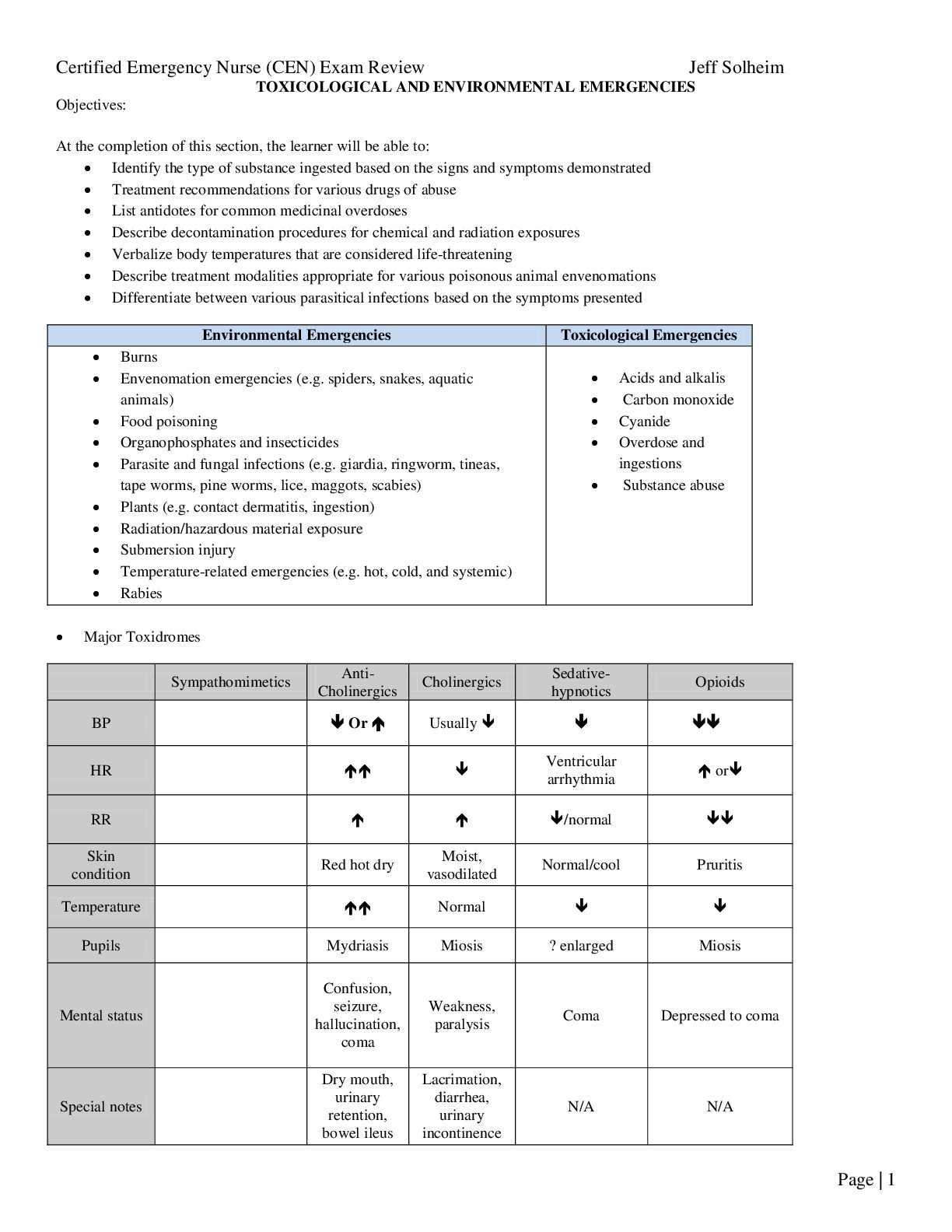All study resources > Certified Emergency Nurse (CEN)5 Exam Review (Nursing)
Certified Emergency Nurse (CEN)5 Exam Review
TOXICOLOGICAL AND ENVIRONMENTAL EMERGENCIES Objectives: At the completion of this section, the learner will be able to: Identify the type of substance ingested based on the signs and symptoms demonstrated Treatment recommendations for various drugs of abuse List antidotes for common medicinal overdoses Describe decontamination procedures for chemical and radiation exposures ...[Show More]
Preview 1 out of 15 pages
Purchase now to view full document
Document details
Subject:
Nursing
Category:
Assignment Answers
Number of pages:
15
Language:
English
Last Update:
3 years ago
